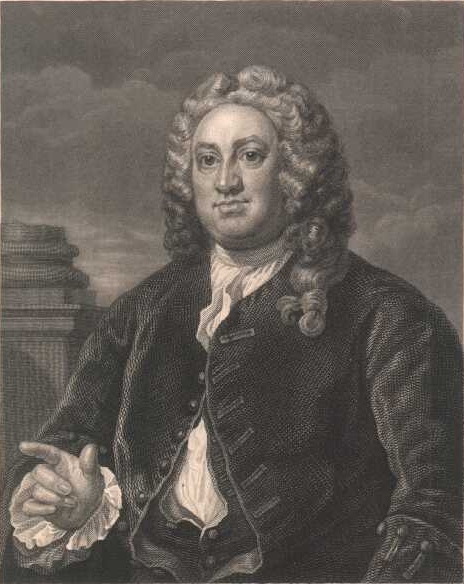<Back to Index>
- Antiquarian Martin Folkes, 1690
- Dramatist Hippolyte Jean Giraudoux, 1882
- Reich Minister of Public Enlightenment and Propaganda Paul Joseph Goebbels, 1897
PAGE SPONSOR

Martin Folkes FRS (29 October 1690 – 28 June 1754), English antiquary, was born in London.
He was educated at Saumur University and Clare College, Cambridge, where he so distinguished himself in mathematics that when only twenty-three years of age he was chosen a fellow of the Royal Society. He was elected one of the council in 1716, and in 1723 Sir Isaac Newton, president of the society, appointed him one of the vice-presidents. On the death of Newton he became a candidate for the presidency, but was defeated by Sir Hans Sloane, whom, however, he succeeded in 1741; in 1742 he was made a member of the French Academy; in 1746 he received honorary degrees from Oxford and Cambridge.
In 1733 he set out on a tour through Italy, in the course of which he composed his Dissertations on the weights and Values of Ancient Coins. Before the Society of Antiquaries, of which he was president from 1749 to 1754, he read in 1736 his Observations on the Trojan and Antonine Pillars at Rome and his Table of English Gold Coins from the 18th Year of King Edward III. In 1745 he printed the latter with another on the history of silver coinage. He also contributed both to the Society of Antiquaries and to the Royal Society other papers, chiefly on Roman antiquities. In 1739 he was elected one of the founding vice presidents of London's charitable Foundling Hospital for abandoned children, a position he maintained until 1747.
Folkes was married in 1714 to Lucretia Bradshaw, an actress who had appeared at the Haymarket and Drury Lane. His portrait was painted and etched by William Hogarth (1697 - 1764).
For Sir John Hill's attack on Folkes (Review of the Works of the Royal Soc., 1751), see Isaac D'Israeli, Calamities and Quarrels of Authors (1860).